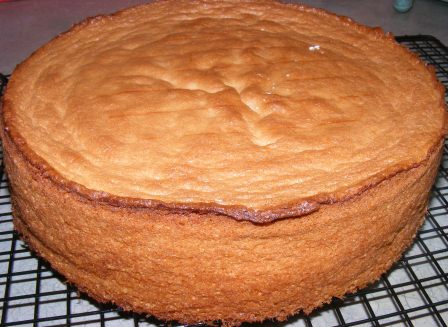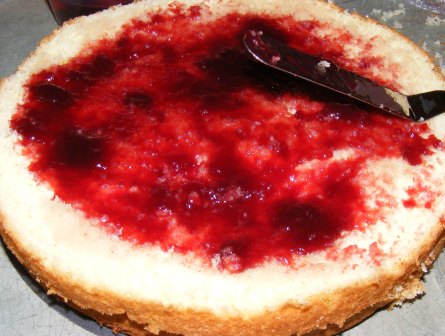The next cake in the line up for the Modern Baker Challenge is one I’ve only made one other time, with disastrous results.
Last June I made — or tried to make — a French Strawberry Cake for Tuesdays with Dorie. There was a lot of chatter on the TWD site at the time about Dorie’s recipe not being a true génoise because the eggs weren’t heated prior to being whipped. Having never made a génoise at the time, all the talk just struck me as people’s opinions about what a “real” génoise should be. I just followed Dorie’s recipe and trusted that everything would work out right.
It didn’t. You can check out the French Strawberry Cake post to see just how wrong things went. Suffice it to say, after that experience, I wasn’t looking forward to making another génoise anytime soon.
I needn’t have worried. Like nearly all of Nick’s recipes, this one is clear, precise, easy to follow, and foolproof.
I began by combining eggs, egg yolks (Nick uses extra yolks to add tenderness, moisture, and stability to the batter), vanilla, salt, and sugar in a mixing bowl. I set the bowl over a pan of simmering water and heated it until the mixture was lukewarm.

I beat the egg and sugar mixture with the whisk attachment on my mixer for about five minutes, until it was light, fluffy, and had more than tripled in volume.

The recipe calls for a fairly small amount of flour, which is mixed with cornstarch, sifted over the egg foam, and then mixed in gently in three additions.

Unlike my previous experience, folding in the flour didn’t cause the foam to collapse, and I was able to get all the flour mixed in.

I scraped the mixture into a buttered 9-inch springform pan.

You’ll notice that there is batter around the edge of the pan. The instructions say to tip the pan and rotate it so that the batter runs to the top all the way around the inside of the pan. This is supposed to make the cake bake flat on the top, rather than doming in the center. Since my previous génoise baked up lopsided (before collapsing), I was hopeful that this trick would work.
I baked the cake at 350°F for about 30 minutes, until it was golden brown and firm in the center. It came out of the oven looking really nice, and I held my breath as I unmolded it. When it didn’t collapse, I put it on a rack to cool, anxious to see what I would end up with. Half an hour later, here’s what it looked like:

If you own a copy of The Modern Baker, turn to page 241 and note the similarity between this cake and the one pictured there. Mine came out almost exactly like the one in the book!
The layer was light but firm. And to my surprise and delight, it rose high enough to be cut into three layers.

Check out this post to see what I used the layers for, but suffice it to say, this cake was wonderful — light, delicate, and very flavorful.
Thanks to Nick I now not only know what a classic génoise is supposed to look and taste like, I also know how to make a perfect one!















































